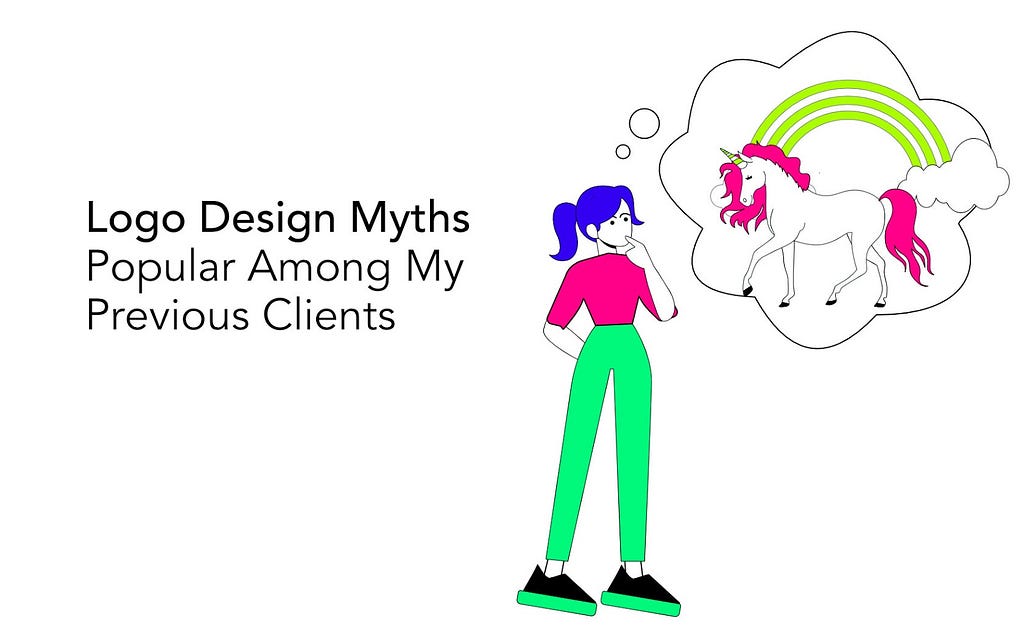
Working as a designer, I have had a fair share of clients — different ones. Yet, surprisingly, some of them shared common stereotypes about the logo design. Digital industries like graphic design have not been around for that much, yet logos are not a new concept. This is why I was very baffled by the misconceptions my clients still had.
Today, I will be listing some of those logo design misconceptions in hopes that your client will stumble upon this article and stop to double-think their opinions (or you can just send them the link ?).
A logo has to include EVERYTHING.
Yes, indeed, the logotype should have a meaning behind it, an association if you will. However, do not make your designers stuff it will all services you do, sprinkled with images based on the brand name. That is not the recipe. A good logo is simple, easily remembered, and symbolic in some way.
In order to catch that symbolism and later display it in a logo design, your designer creates a brief, makes research about your brand, and thinks hard on what imagery will suit better.
A logo is not something to think a lot about.
What can be so hard, it’s just a pretty picture? Actually, it’s not just that. A finished product can look pretty yet you don’t know what goes into it. The aforementioned research, the structure, the proportions, and million of sketches and tries.
A logo that is memorable has to be built on a list of principles that designers know. It takes time, effort, and creativity to take the rules, combine them with an idea, and have something beautiful in the outcome.
A logo can be created by anyone who knows photoshop a bit.
Unfortunately, this myth is still around and it seems like it won’t go anywhere. Browsing my socials I often stumble upon unprofessional bloggers “designing” logos for their viewers. With no concern to the font copyrights, and the authenticity of the design.
As described earlier, logo design is so much more than choosing a cute looking font and writing the name of the brand. This stereotype perpetuates the idea that design, in general, is super easy, and you don’t need to know anything to do it.
A logo should adhere to an industry-standard.
Once the dentists’ logo won’t have a tooth on it and the world will collapse.
Certain imagery is so much associated with an industry that sometimes it’s hard to step out of the lane a bit. Think of your local dentist office, or a house insurance company — their logos probably have a tooth and a house on them.
If you’re a designer, and a client wants a logo that exactly fits into this imaginary standard it can be very hard to find an original way to make it. On the other hand, if you offer something more creative, it will probably be cast away.
The first logo = the only logo.
Though the first logo is in fact very important for brand recognition, you can always rebrand. The logo evolves together with your brand, it’s normal. Trends change, and in order to look modern, companies modify the logo design from time to time. I am not talking about completely redesigning the logo (however that happens too), but tweak it a bit to look better.

A logo makes a business a brand.
The logo is an important part of the branding process. Yet not the only one. This stereotype is mostly common among small business owners that just don’t really know how branding works. There is a journey before you design a logo, and after it’s done.
The logo is crucial in creating brand recognition, but the logo has to be seen to be remembered.
Big brand logo success has nothing to do with good branding and marketing.
No, Coca Cola’s logo didn’t become famous because they were lucky. Related to the previous point, a good logo is always accompanied by a marketing and a branding strategy — that is how it goes.
That’s it from me today. Did I forget to mention something? If yes, make sure you let me know what are the logo design myths you encountered.
See ya next time!
Logo Design Myths Popular Among My Previous Clients was originally published in UX Planet on Medium, where people are continuing the conversation by highlighting and responding to this story.
This content was originally published here.

